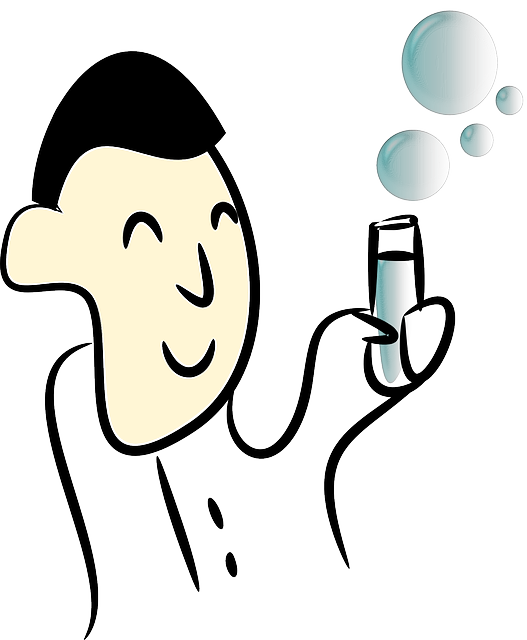
I recently wrote about choosing self-care activities that work for you along with detailing some of the challenges that arise when listening to yourself.
But, what if you don’t really know what works?
Or, what if you would like a system to help you continue to refine your self-care activities so that you are receiving the most benefit from them?
That is what we are going to talk about today… how to truly know if what you are doing is working, if it is self-care… for you. 🙂
How to be a self-care scientist.
As practitioners of Sacred Self-Care, we follow a system that allows us to know if what we are doing is working. Here are the steps we follow:
- Assess your baseline
- Set your intention
- Choose and do a self-care activity
- Reassess your baseline
- Determine whether your activity ‘worked’
- Celebrate!
1) Assess your baseline.
The baseline assessment is where you pause and take a moment to check in with yourself and your surroundings.
You notice your thoughts, briefly check-in with your emotions (perhaps rating their intensity on a scale of 1-10), and then tune into the corresponding sensations in your body.
Note: in the Sacred Self-Care e-course, I go into this process in greater depth including helping you discover ways to remember to check-in.
Once you have a sense of your current baseline (the status of your internal world), you move on to step two.
2) Set your intention for your self-care activity.
How do you wish to feel after you have completed your self-care activity?
- Perhaps you are depleted, drained, exhausted and are seeking more energy and vitality.
- Perhaps you are stressed, anxious, and overwhelmed and want to feel calm, nourished, and relaxed.
- Perhaps you are in physical pain and seeking relief.
Whatever it is that you wish to experience as a result of your self-care activity, allow yourself to name and acknowledge it.
3) Choose and do a self-care activity.
What the activity is doesn’t really matter. It may be as simple as drinking a glass of water or staring out the window for a few moments. It may be something more time intensive like an hour long yoga class or other workout.
Further, it doesn’t even matter if what you choose to do fits within the typical model of self-care – of how you think self-care should look.
In this stage, we are simply doing some activity so that we can collect data regarding the effect it has on our bodies and minds.
After you have completed your chosen activity, move on to step four.
4) Reassess Your Baseline.
Check in again.
Notice your surroundings. Has how you perceive your environment changed in any way?
Notice your thoughts. Have they changed in any way from your original baseline? Perhaps they have. Perhaps they haven’t. It doesn’t really matter. The important thing to notice is whether they have or haven’t. And, if they have… how?
Check in with your emotions. Have they shifted or changed in anyway? If so, how? If not, that is fine. Take note.
Check in with the sensations in your body. What is present in your body now? Where do you feel sensations of tension? Or ease? Have they shifted (lessened, intensified, etc) in any way? Again, take note.
5) Determine whether your chosen activity worked.
Now that you have collected your data, compare your second baseline readings to both your initial baseline data AND to the intention you set for your self-care activity in step two.
If you were seeking more energy, do you feel more energized?
If you wanted to feel calm and nourished, did that happen?
There is no judgement or failure in this process.
We played with this process on a self-care call and one participant wanted to feel energized after our activity. Instead she felt deeply calm and a bit sleepy.
Does this mean our activity failed?
Not necessarily. She learned something really valuable through the process. She discovered an activity to use when she wants to feel calm or when she is having difficulty falling asleep. And, she will keep experimenting to find what helps her feel energized.
Again, in this process, we are scientists collecting information about what works or doesn’t work for us. If our self-care activity didn’t yield the results we wanted (didn’t meet our intention), that is simply information for next time.
6) It’s time to celebrate!
Celebrations! Whether your activity worked or not, celebrate that you now have more information about what works (and doesn’t work!) … for you!
This is always information worth celebrating!
In conclusion, this process is about bringing full awareness to what is often a fairly unconscious process.
Six steps can seem like a lot. However, once you’ve used this process a time or two, you will find it happens very naturally, swiftly, and efficiently.
You might even realize that you already automatically follow these steps.
- I wanted to feel calmer, I did this thing, and now I do! Yay! It worked.
- I wanted to feel energized, I did this thing and now I feel even more depleted. It didn’t work. Yay! I won’t do that next time! Etc. 🙂
My intention through sharing this process is to help you become more actively conscious of a process that we often do on a fairly unconscious level.
Through bringing this process into the full light of our consciousness, we will have the opportunity to make better decisions regarding our self-care activities when we are stressed, overwhelmed, or in pain.
My love to you,
Larisa
Leave a Reply